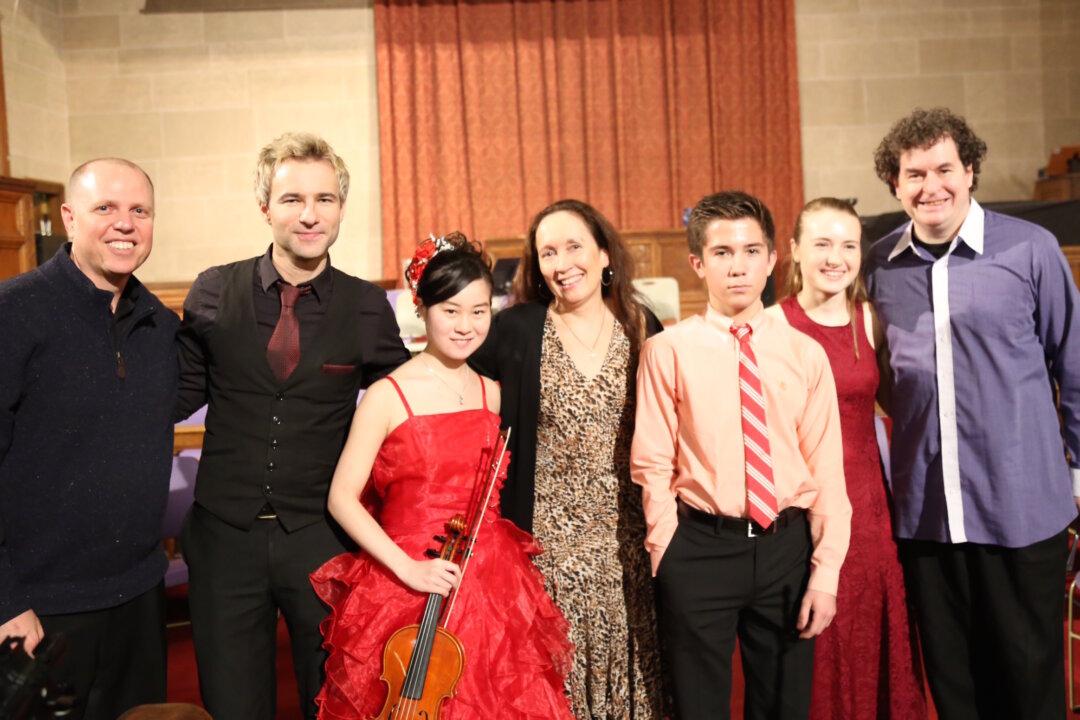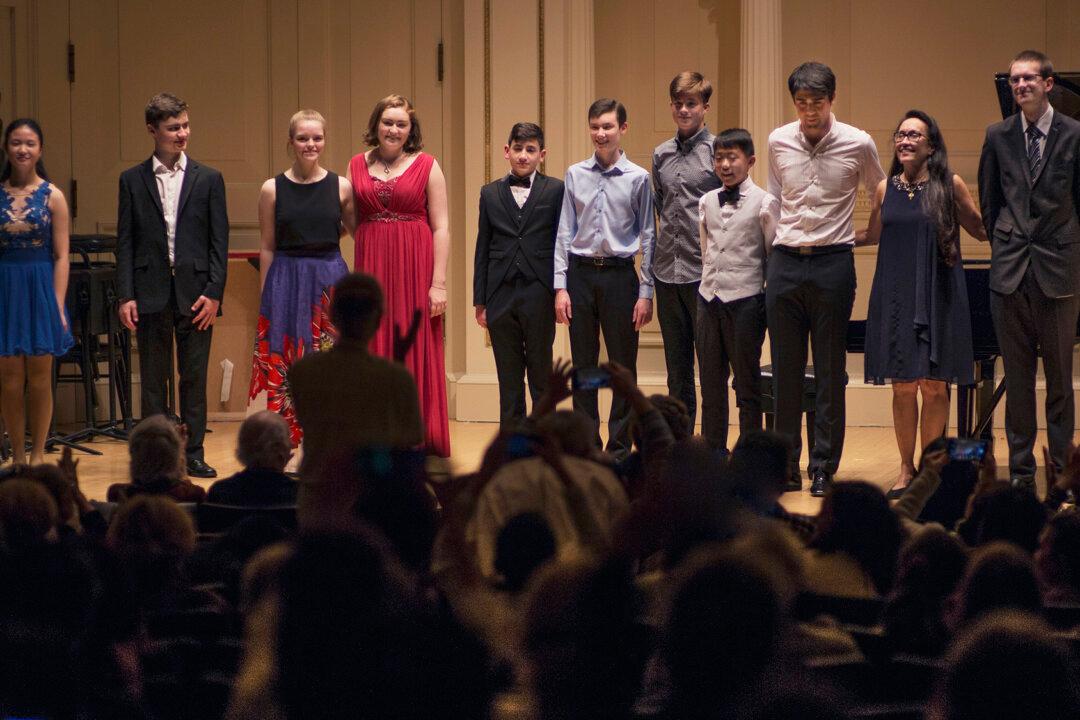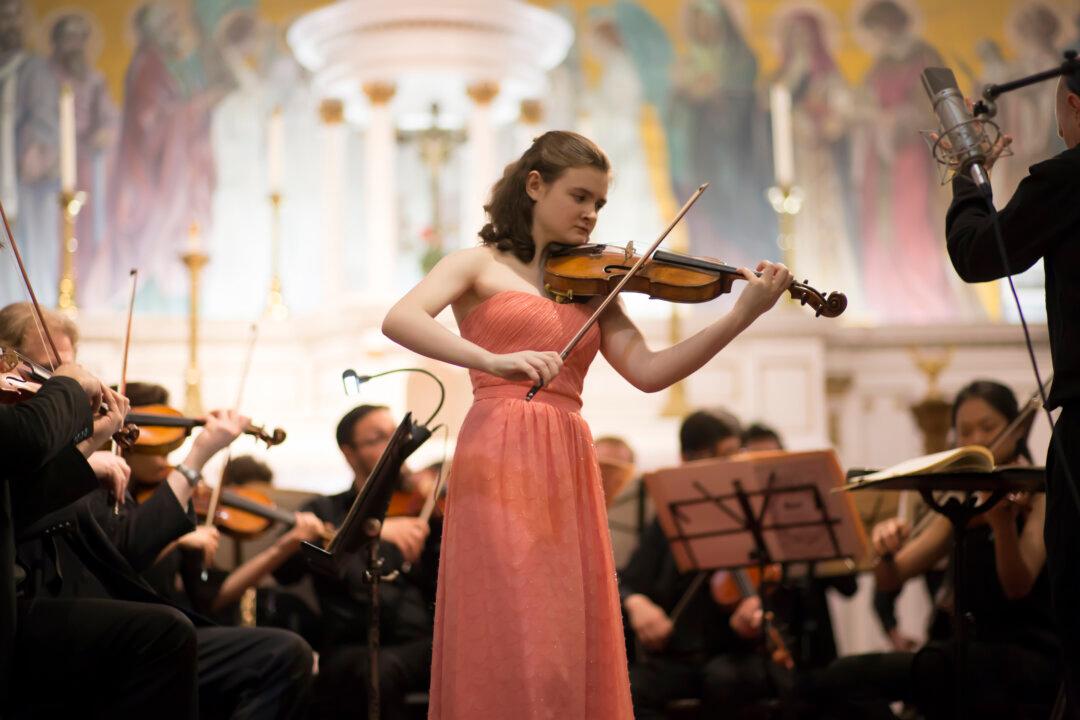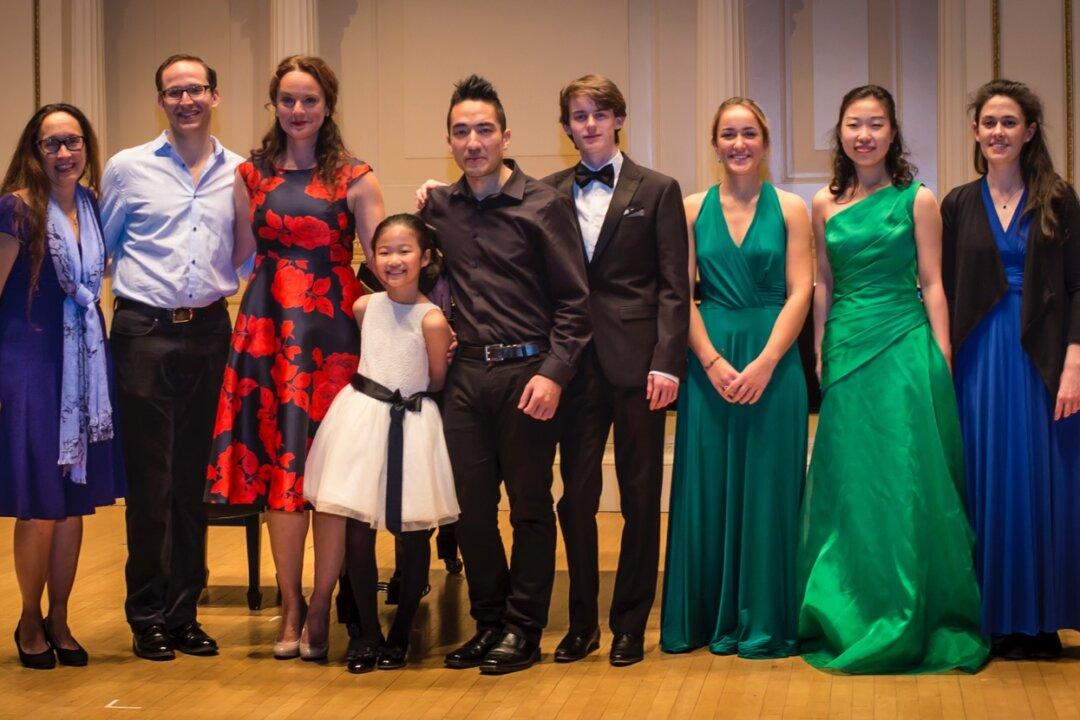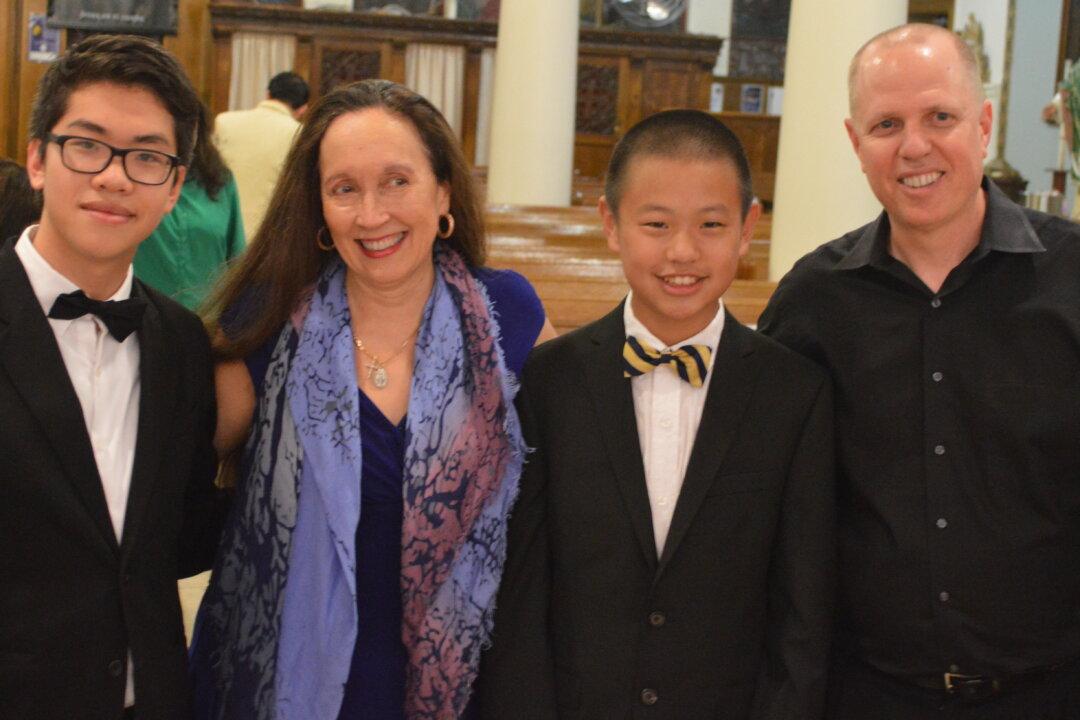NEW YORK—In its Oct. 2015 four-event Irish Festival, the New York Concerti Sinfonietta expanded its musical programs to include two dramas in celebration of the 150th birthday of W. B. Yeats. This month, to end a pair of January afternoon concerts, the Sinfonietta added the unique art of Irish percussive dance, literally “dropping the other shoe.”
The guest dancer’s dazzling display of terpsichorean virtuosity delighted the audience, along with a guest jazz clarinetist’s memorable improvisations on classical repertory. Also heard were appearances by first prize winners of the 2016 International Shining Stars Debut Series, as well as returning soloists.
Niall O'Leary first accompanied the orchestra on the spoons.

